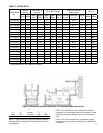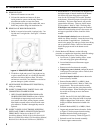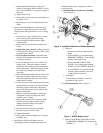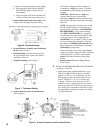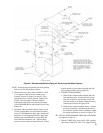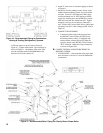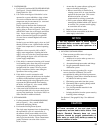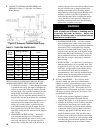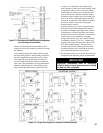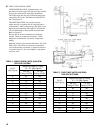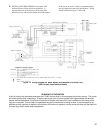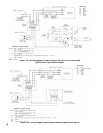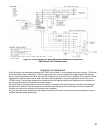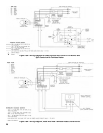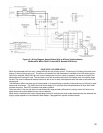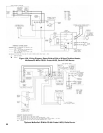
15
Figure 13 Recommended Smokepipe Arrangement
and Chimney Requirements
Figure 14: Proper and Improper Locations of Draft Regulator
the heat loss of the home has been reduced. This
requires less fuel to be burned and sends less heat up
the chimney.
A new boiler probably has a higher efciency than
the boiler being replaced. That probably means that
the stack temperature from the new boiler will be
lower than that from the old boiler and with less
room air being drawn up the chimney to dilute the
stack gases. The combination of a large uninsulated
chimney, reduced ring rate, reduced ring time,
lower stack temperature and less dilution air can,
in some cases, contribute to the condensing of
small amounts of water vapor in the chimney. Such
condensation, when it occurs, can cause chimney
deterioration. In extreme cases, condensed water
may be visible on the outside of the breeching or
chimney. In those extreme cases, the chimney may
have to be lined to insulate the chimney and thus
prevent the condensation. The addition of dilution
air into the chimney may assist in drying the
chimney interior surfaces.
A massive chimney on a cold, or exposed outside
wall may have produced adequate draft when it
was red with a higher input and greater volumes
of heated gases. With reduced input and volume,
the draft may be severely affected. In one instance
research showed a new chimney of adequate
sizing produced only .035" W.C. after 30 minutes
of continuous ring at 13.0% CO
2
. Outside wall
chimneys take longer to heat up and can have .00"
W.C. draft at burner startup. You may have to
consider a special alloy chimney ue liner with
insulation around it and a stabilizing draft cap or
even a draft inducing fan in severe cases.
3. For the same reasons as in 2. above, heat extractors
mounted into the breeching are not recommended.
IMPORTANT
Single-pipe installations must be absolutely
airtight or leaks or loss of prime may result. Bleed
line and fuel unit completely.



